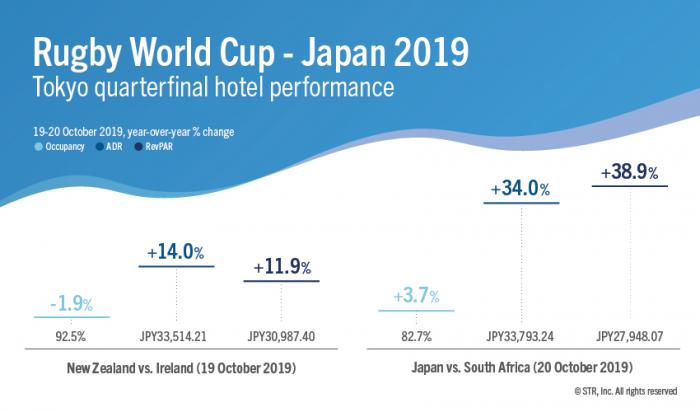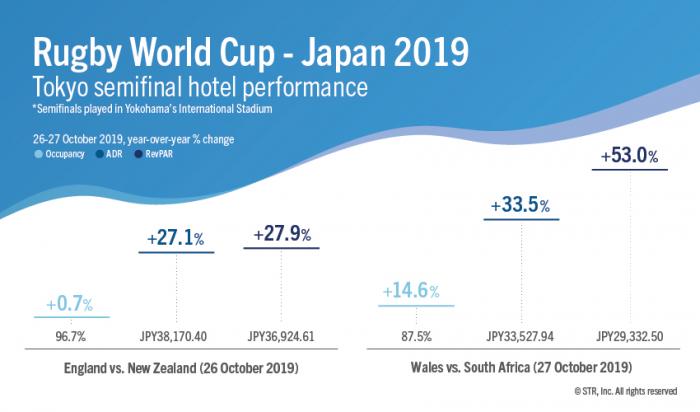In the first part of our Rugby World Cup 2019 series, we discussed the group stage’s positive influence on Japan hotel market performance. During the tournament’s knockout phase, the influence grew and showed a direct correlation between the magnitude of the fixture and average daily rate (ADR).
Quarter and semi-final fixtures took place across Saturdays and Sundays, and hotel performance data revealed interesting trends for each of the days. Saturday occupancy growth was minimal as a result of a high comparison basis, enabling hoteliers to push ADR. Sunday, meanwhile, came from a much lower base and typically reported significant growth in both metrics.
*October performance data based on day to day comparison, JPY, unless stated otherwise.
Quarterfinals: 19-20 October
When Oita hosted England’s victory over Australia on Saturday, 19 October, Kyushu (the island where Oita is located) hotels produced just a 2.6% increase in occupancy to an absolute level of 98.1% and reported ADR of JPY16,365.88. For Sunday, 20 October’s fixture between Wales and France, however, hotel occupancy reached 87.1% but a year-over-year increase of 25.6%.
A difference in growth in revenue per available room (RevPAR) highlights the boost provided to Sunday night performance, as 20 October showed an increase of 80.9%—much higher than the 12.7% produced the previous day.
Tokyo performance data demonstrates similar trends. When New Zealand defeated Ireland on 19 October, occupancy actually fell 1.9% despite reaching a level of 92.5%. Contrarily on Sunday, 20 October, occupancy rose 3.7% to 82.7% when the tournament hosts were defeated by eventual champion, South Africa. Notable increases occurred in ADR, which rose by double digits on both days.
Tokyo West/Shibuya-Shinjuku, an STR-defined submarket in close proximity of Tokyo Stadium, reported absolute occupancy of 96.9% and 89.6% on 19 and 20 October, respectively. This represented just a marginal increase for Saturday’s fixture but almost 10% growth on the Sunday—the latter day achieved 70.9% RevPAR growth as a result of a 56.0% ADR increase.

